Get your froth on with us as we walk you through the simple steps to making the perfect cappuccino.
 Espresso Machine
Espresso Machine
 Milk jug
Milk jug
 18g ground coffee
18g ground coffee
 Milk or milk alternative
Milk or milk alternative
 Chocolate powder (optional)
Chocolate powder (optional)
Like some of the greatest coffee drinks around, the cappuccino has its roots in Italy, having only gone global back in the 1980s. The Italians traditionally enjoy the velvety brew simply with espresso and milk, but other variations include a sprinkle of cinnamon or cocoa powder, too.
The name ‘cappuccino’ comes from Capuchin friars, who wore deep brown habits with a hue that closely resembled the colour made when milk is added to brewed coffee. Legend has it that one particular Capuchin monk, Marc d’Aviano, invented the cappuccino as a reprieve following the Battle of Vienna.
Thus, the cappuccino was born — and we’ve been drinking it up ever since.
A cappuccino is a popular coffee drink made with a double shot of espresso and topped with equal parts steamed milk and milk foam. The espresso base of the drink cuts through the foam and provides a rich coffee flavour, while the milk offers a little complementary sweetness. This creates a delightfully well-balanced brew with a creamy mouthfeel.


These are two of the coffee-drinking world’s most beloved brews — but also two of the most commonly confused. The difference between the drinks comes down to the ratio of espresso, steamed milk and milk foam. In a latte, you typically use a 1:2 ratio of espresso to steamed milk, topped off with just a little foam. In a cappuccino, however, the ratio of espresso to steamed milk and foam is 1:1:1 — the bubbly brew traditionally boasts a thicker layer of froth.
A dry cappuccino is a variation on the standard drink that has less steamed milk and more foam. Thanks to this skewed ratio, the dry cappuccino usually has a stronger coffee flavour. On the other hand, a wet cappuccino features more steamed milk and less foam, and usually tastes slightly sweeter because there’s more milk to dilute the espresso.
Fresh, whole dairy milk is recommended for a cappuccino in order to create a smooth and creamy foam. While lower-fat dairy milk will stretch, the foam it makes tends to be lighter and quicker to dissolve, a bit like a meringue.
If you’re looking for a dairy-free alternative, we recommend unsweetened oat or soy milk, as these substitutes will froth nicely without clouding the flavour of your brew too much.
To get the perfect milk consistency for your cappuccino, steam until you’ve made approximately double the volume that you started out with. To begin, activate the clean steaming wand just below the surface of the milk, at a slight angle to your jug. Once you’ve found the sweet spot for stretching the milk, you should hear a squeaky hissing noise, and a vortex will form.
Let the milk rise until you reach the double mark, then lower your wand a little deeper to finish off steaming. When the bottom of your jug is hot to the touch, turn off the steam and give your milk a swirl. Then, condense the foam by tapping your jug on a work surface.
You can also froth your milk using a whisk — but this takes a little longer and might not whip the milk as well. For the best results, use a steam wand.